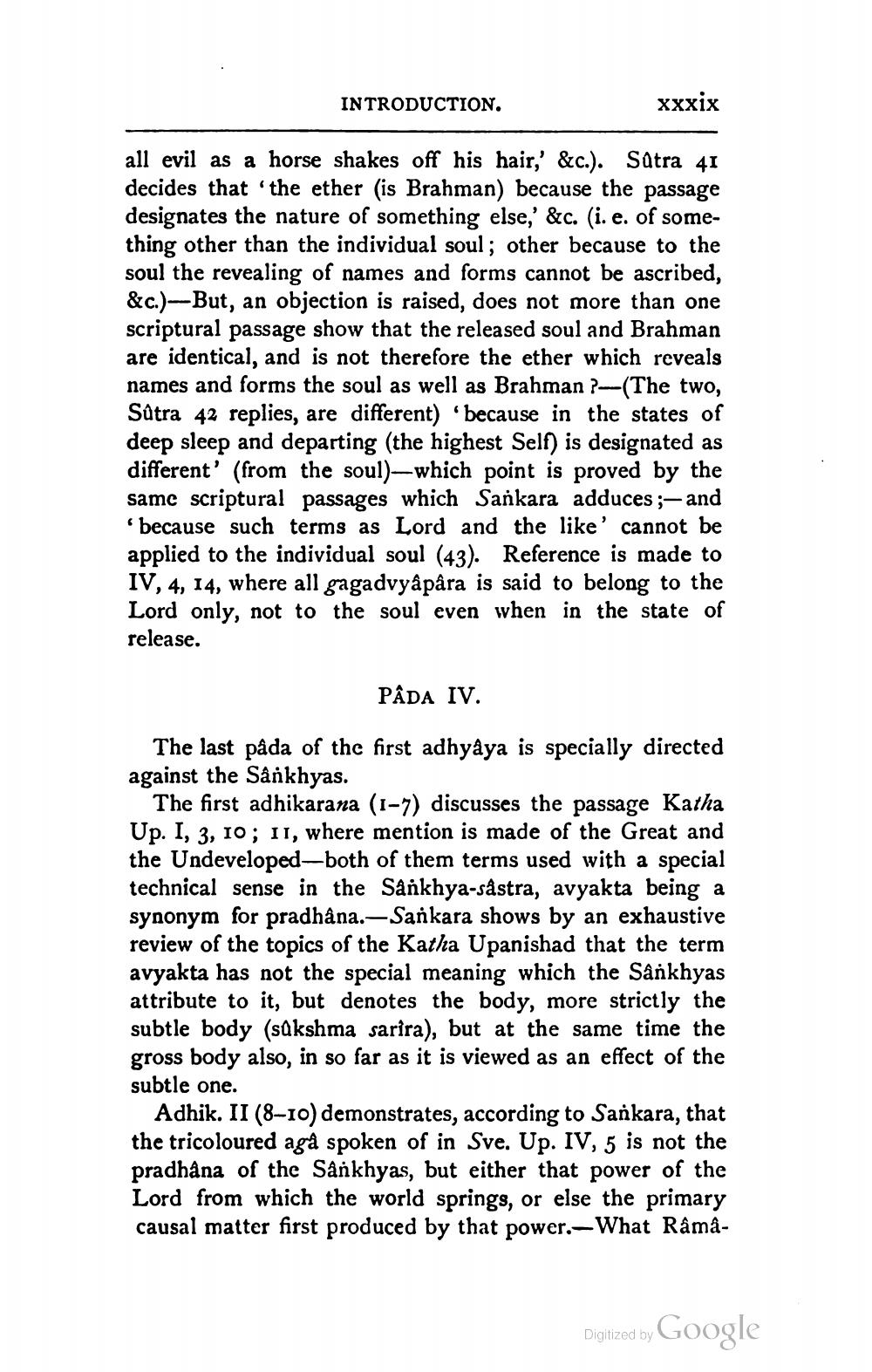________________
INTRODUCTION.
xxxix
all evil as a horse shakes off his hair,' &c.). Satra 41 decides that 'the ether (is Brahman) because the passage designates the nature of something else,' &c. (i. e. of something other than the individual soul; other because to the soul the revealing of names and forms cannot be ascribed, &c.)--But, an objection is raised, does not more than one scriptural passage show that the released soul and Brahman are identical, and is not therefore the ether which reveals names and forms the soul as well as Brahman (The two, Sûtra 42 replies, are different) 'because in the states of deep sleep and departing (the highest Self) is designated as different' (from the soul)—which point is proved by the samc scriptural passages which Sankara adduces;- and
because such terms as Lord and the like' cannot be applied to the individual soul (43). Reference is made to IV, 4, 14, where all gagadvyâpâra is said to belong to the Lord only, not to the soul even when in the state of release.
PÂDA IV.
The last pada of the first adhyâya is specially directed against the Sankhyas.
The first adhikarana (1-7) discusses the passage Katha Up. I, 3, 10; 11, where mention is made of the Great and the Undeveloped-both of them terms used with a special technical sense in the Sankhya-sastra, avyakta being a synonym for pradhana.—Sankara shows by an exhaustive review of the topics of the Katha Upanishad that the term avyakta has not the special meaning which the Sankhyas attribute to it, but denotes the body, more strictly the subtle body (sakshma sarira), but at the same time the gross body also, in so far as it is viewed as an effect of the subtle one.
Adhik. II (8-10) demonstrates, according to Sankara, that the tricoloured agà spoken of in Sve. Up. IV, 5 is not the pradhana of the Sankhyas, but either that power of the Lord from which the world springs, or else the primary causal matter first produced by that power. What Râmå
Digitized by
Digitized by Google




